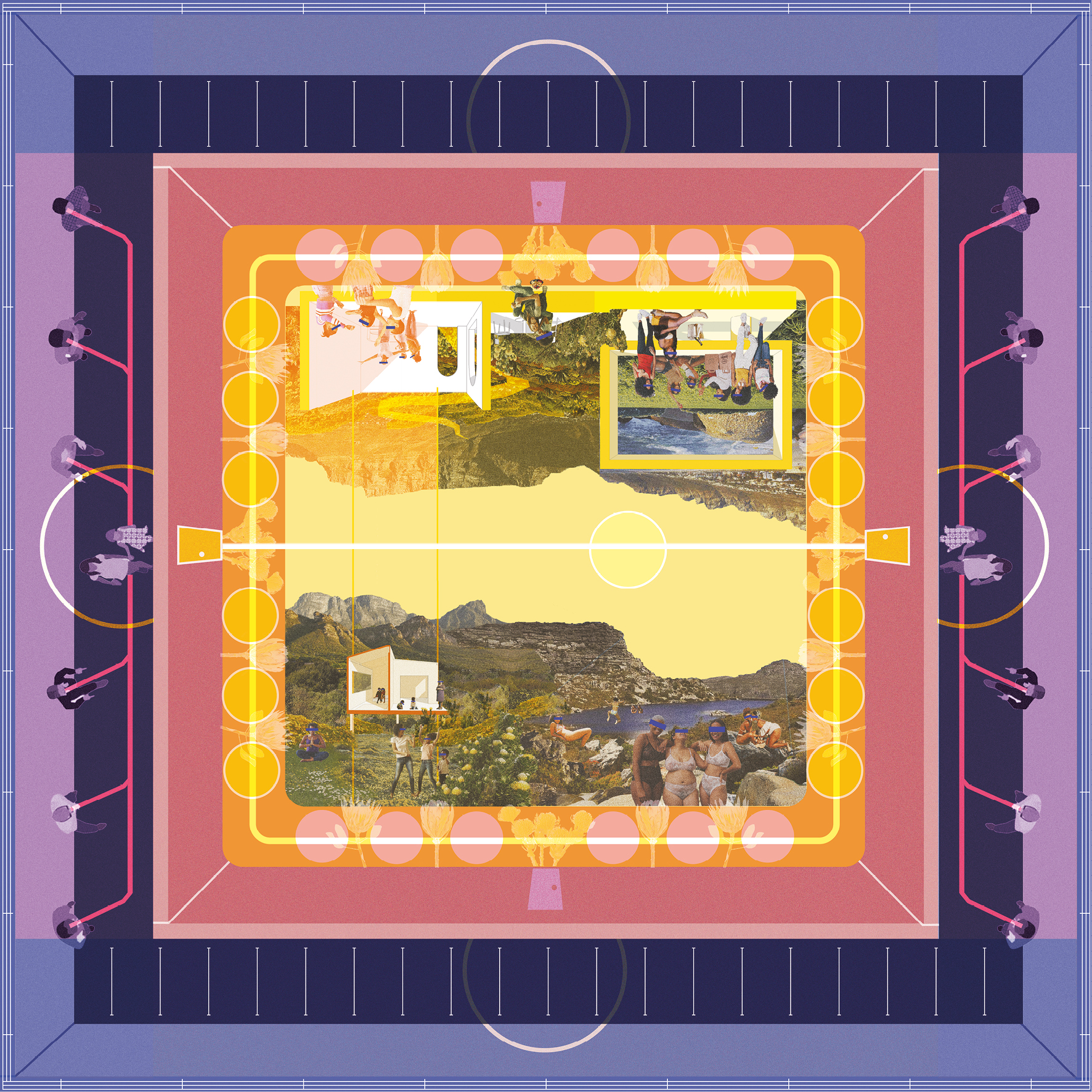SPATIAL STORYTELLING: CONDUIT AND VESSEL
Khensani de Klerk
︎︎︎
Khensani de Klerk
︎︎︎











Employing collage as a means of making visible often intangible challenges, ideas and fantasies around safety; the semi-corporeal moving object situates itself as both conduit and vessel. As a fabric of narratives interwoven and viewed collectively in the public realm, it acts as a conduit for storytellers to share their experiences and understandings of the city.
Themes:
Counter-Scopic Regimes, Interrogated Materialities
Methods: Collage, Archive, Digital Ethnography, Intimate, Sonic
References:
Fraser, Nancy. “Rethinking the Public Sphere: A Contribution to the Critique of Actually Existing
Democracy.” Social Text 25-26, no. 25/26 (1990): 56-80.
Hill Collins, Patricia. Black Feminist Thought : Knowledge, Consciousness, and the Politics of
Empowerment / Patricia Hill Collins. Second ed. Routledge Classics. 2009.
Russell, Legacy. Glitch Feminism : A Manifesto / Legacy Russell. 2020.
Collaborators:
Photography: Frederick Kannemeyer
![]()
[i] Also read another piece on visually reflecting public space: ERVEN MIRAGES: TOWARDS OTHER CONSTRUCTIONS OF VALUE by Sarah De Villier
[ii] For another piece on how Black women navigate space, see: SUBTLE GEOGRAPHIES by Anna Sango
Methods: Collage, Archive, Digital Ethnography, Intimate, Sonic
References:
Fraser, Nancy. “Rethinking the Public Sphere: A Contribution to the Critique of Actually Existing
Democracy.” Social Text 25-26, no. 25/26 (1990): 56-80.
Hill Collins, Patricia. Black Feminist Thought : Knowledge, Consciousness, and the Politics of
Empowerment / Patricia Hill Collins. Second ed. Routledge Classics. 2009.
Russell, Legacy. Glitch Feminism : A Manifesto / Legacy Russell. 2020.
Collaborators:
Photography: Frederick Kannemeyer
[i] Also read another piece on visually reflecting public space: ERVEN MIRAGES: TOWARDS OTHER CONSTRUCTIONS OF VALUE by Sarah De Villier
[ii] For another piece on how Black women navigate space, see: SUBTLE GEOGRAPHIES by Anna Sango

Khensani de Klerk is an architectural researcher and designer from Johannesburg. She centres practicing intersectionality through research and design. Her view of intersectionality questions and imagines how efficiency and narratives of the built environment can be more sustainable through ethically social and ecological practices. She is the founder of Matri-Archi(tecture), a collective based between South Africa and Switzerland that aims at empowering African women as a network dedicated to African spatial education. Her recent research at the University of Cambridge focused on typologies of safe space with aims at reducing Gender-based violence in cities. Khensani finds educational value in spatial, written and auditory explorations centring storytelling as critical to spatial practice. She researches and teaches at the chair of Affective Architectures at the ETH Zürich in Switzerland. She hosts a podcast called KONTEXT and serves as an editorial contributor at the Architectural Review in London. She is based between South Africa and Switzerland.
︎ @khen_dek
︎ @khe_deK
︎ www.khensanideklerk.com
︎ Khensani de Klerk
︎ @khen_dek
︎ @khe_deK
︎ www.khensanideklerk.com
︎ Khensani de Klerk
